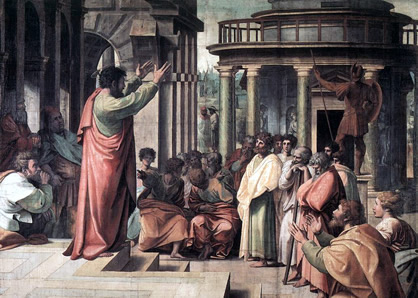Troy Acts 16:8-11, cp. 2 Cor. 2:12-13, Acts 20:6-12, 2 Tim. 4:13
In northwest Anatolia near the Aegean Sea lies the ancient city of
Troy, known for centuries only in the pages of the Homer's lyric.
Archaeological digs began there in the early 1870's by German
archaeologist Heinrich Schliemann, who maintained that the city was
not simply a mythological city. His work was continued after his
death by two other Germans, Wilhelm Dorpfield and Carl Blegen, near
the turn of the century.
The outcome of the excavations was a view of the nine strata
(archaeological levels) of the ancient city representing the history
of the city's remains. A careful study of these levels reveals the
city to have been founded around 3000 BC (Troy) and was destroyed by
fire about five centuries later.
The city was rebuilt several times in the Bronze Age (Troy ii-vii),
and was occasionally burned (Troy ii), but seemed to reach its
zenith in Troy vi which appears to have been destroyed by a massive
earthquake in about 1300 BC. Not deterred, the people of Troy
rebuilt the city again (Troy vi-a) which was later immortalized in
Homer's Iliad and subsequently destroyed around 1200 BC.
The city was rebuilt in a limited fashion and stood between
1200-1100 BC (Troy vi-b), but was eventually left abandoned until
around 700 BC when a small village existed on the site. The city was
again rebuilt during the Hellenistic and Roman period some distance
away (where it enters into the New Testament in the form of Troas
(see article on Troas/Dalyan; Acts 16:8-11, the place of St. Paul's
Macedonian call vision; cp. also 2 Cor. 2:12-13, Acts 20:6-12, 2
Tim. 4:13). A visitor today will encounter a number of points of
interest including the ancient fortifications exposed by Schliemann
and a modern Trojan horse model.
Biblical Sites in Turkey List


